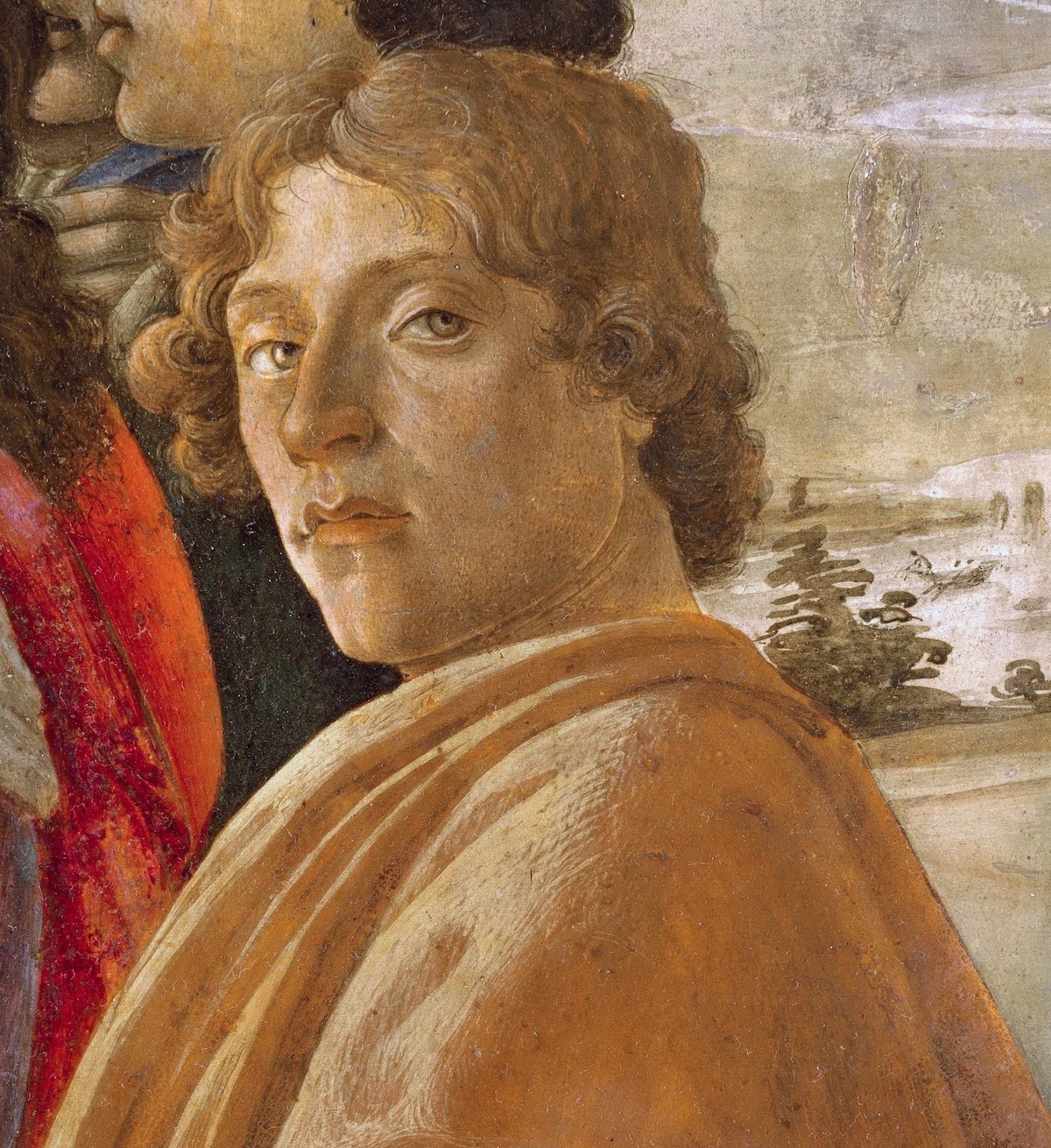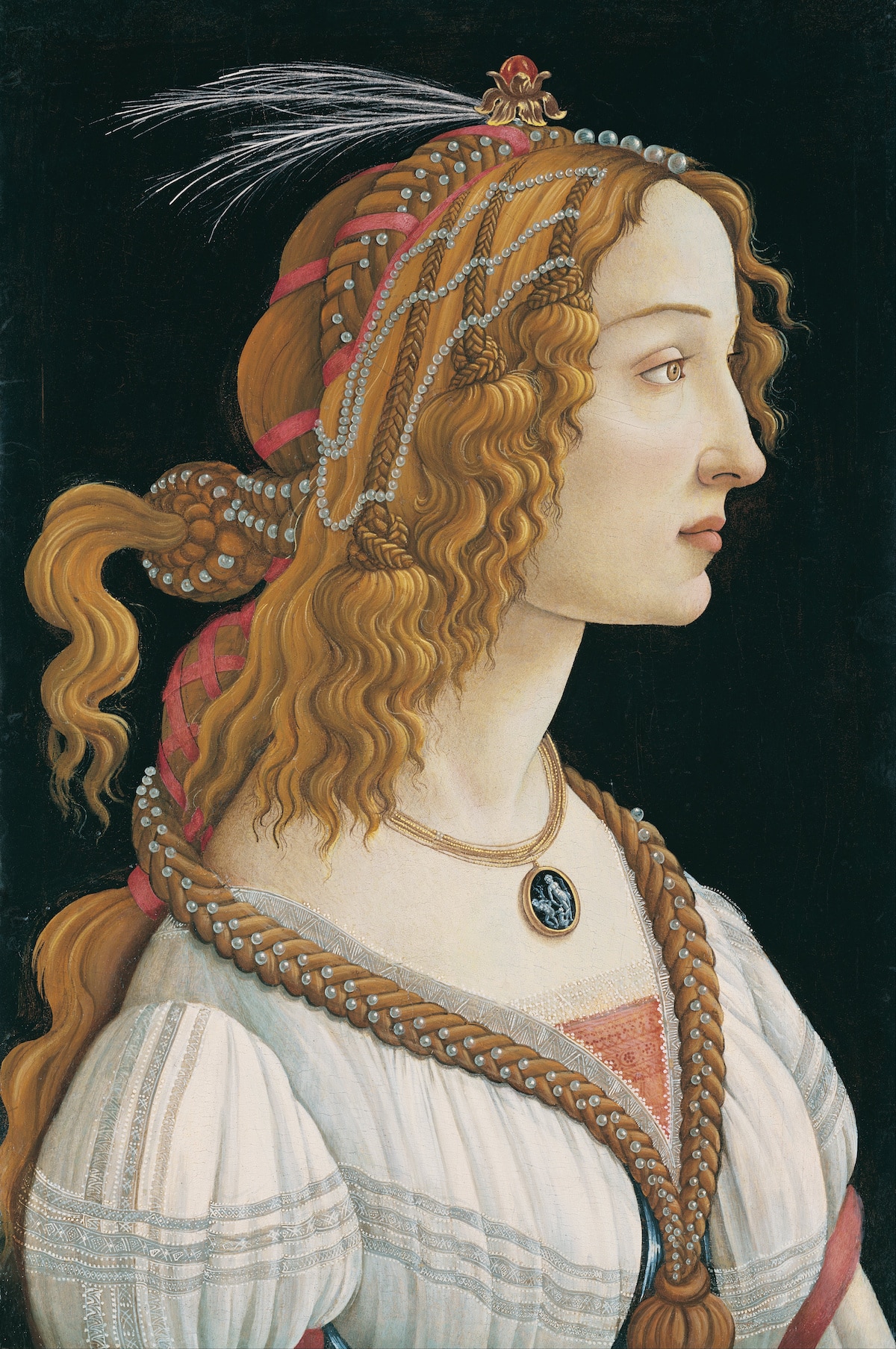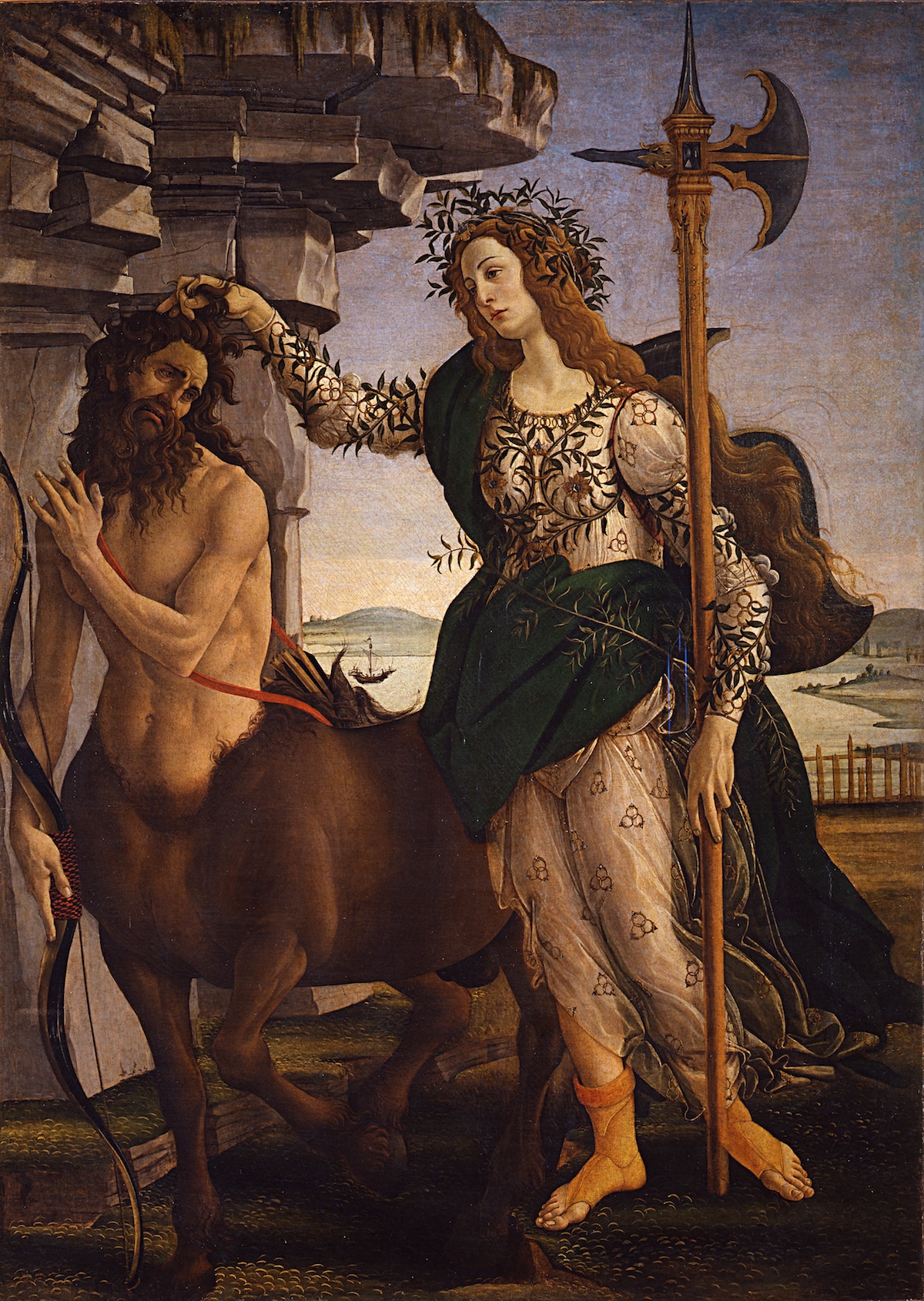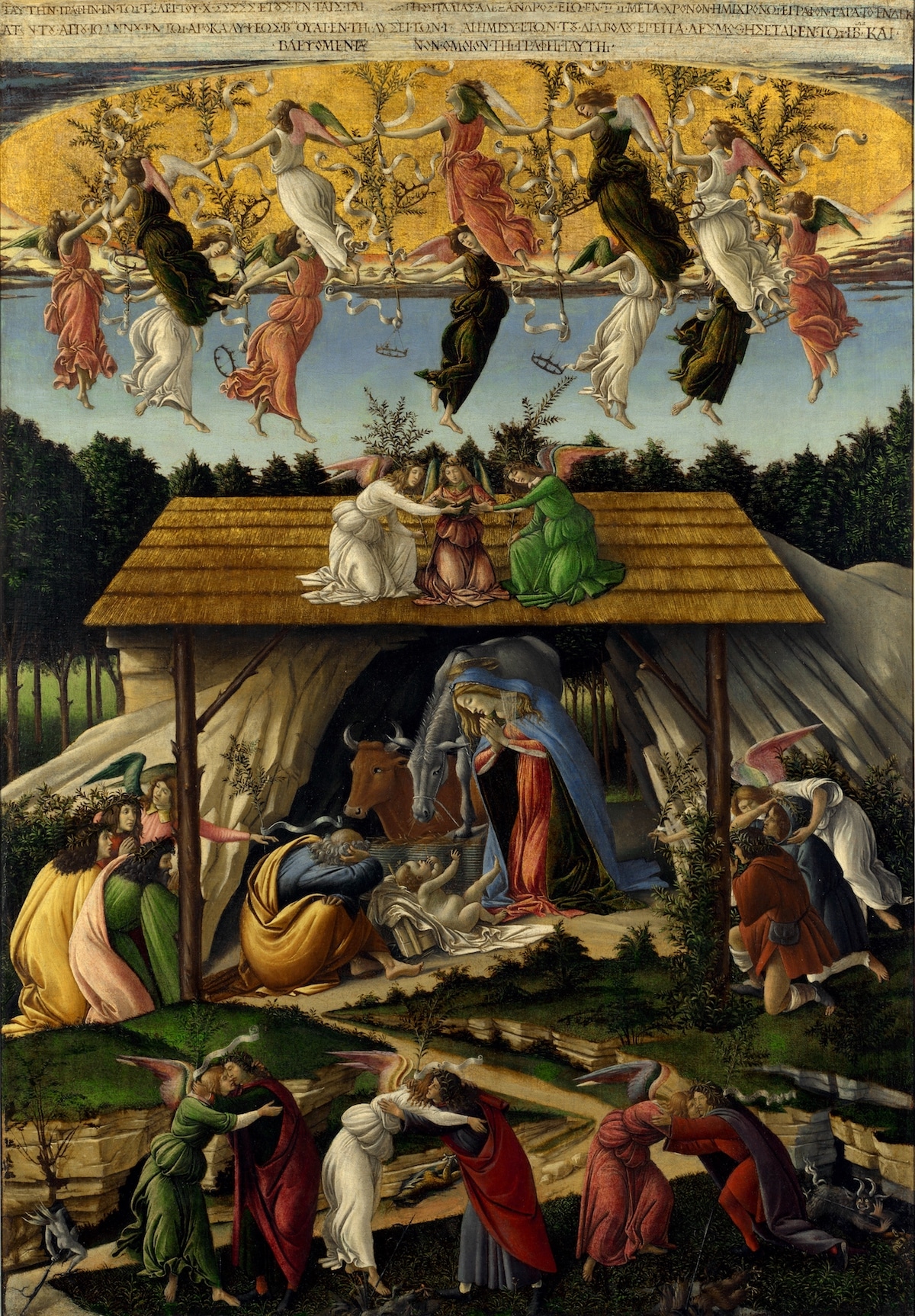
Sandro Botticelli, “Birth of Venus,” c. 1484-6 (Photo: Uffizi via Wikimedia Commons, Public domain)
Few artists encapsulate the pristine beauty of Renaissance art as well as Sandro Botticelli. An artist from the Quattrocento, or Early Renaissance period, he represented the shift away from the Gothic style and toward classical ideals and naturalism.
Although Botticelli left behind a diverse portfolio of portraits and religious paintings, he is best remembered for his mythological scenes. Both Primavera and Birth of Venus, encapsulate the humanist ideologies of the era and highlight Botticelli’s refined and rhythmic style.
Here we will learn more about Botticelli’s life and the impressive body of work he left behind.
Who was Sandro Botticelli?

Self-portrait of Sandro Botticelli from his painting “Adoration of the Magi,” c. 1476 (Photo: Uffizi via Wikimedia Commons, Public domain)
Sandro Botticelli (c. 1445–1510) was a prominent Italian painter of the Quattrocento or Early Renaissance. Roughly seven years older than Leonardo da Vinci, he was one of the first artists of this era to depict humanist subject matter, such as scenes from classical mythology. Additionally, his many influential patrons, including members of the all-powerful Medici family, helped him produce an impressive oeuvre, including secular portraits and a range of religious paintings.
Early Life

Sandro Botticelli, “Adoration of the Magi,” c. 1476 (Photo: Uffizi via Wikimedia Commons, Public domain)
Originally from Florence, Botticelli was born Alessandro di Mariano di Vanni Filipepi to a local tanner and, later, gold-beater. Although the precise reason he was called Botticelli remains unclear, it is suggested in Vasari’s Lives of the Artist that he adopted the name from a local goldsmith, under whom he apprenticed.
His earliest known artistic training was in gold-beating, after which he found tutelage under a leading Florentine painter, Fra Filippo Lippi (c. 1406–1469). It was during this time that Botticelli developed excellent draftsmanship—a skill that is prevalent in many of his most famous works—and engaging compositions.

Sandro Botticelli, “Idealized Portrait of a Lady” (Portrait of Simonetta Vespucci as Nymph), c. 1480 (Photo: Städel Museum via Wikimedia Commons, Public domain)
By 1469, Botticelli operated his own studio and received numerous commissions for religious paintings, like Adoration of the Magi and St. Sebastian. He was even asked to decorate the newly completed Sistine Chapel, although most of this work is overshadowed by Michelangelo’s painting of the ceiling.
Mythological Scenes

Sandro Botticelli, “Primavera,” c. 1477–82 (Photo: Uffizi via Wikimedia Commons, Public domain)
While Botticelli enjoyed significant success in his earlier work, it is his paintings from the 1480s that have left the greatest legacy. During this time, he created his two greatest masterpieces—Primavera (c. 1477–82) and Birth of Venus (c. 1484–6), which have become icons of the Italian Renaissance.
These two paintings reflect the humanist ideals of the time, including a renewed interest in classical ideals. In fact, Botticelli was one of the first artists of the time period to depict mythological subjects and narratives without Christian undertones. Likewise, his depiction of the naked female body on a massive scale was a radical decision for the era.
His delicate, linear style shines in the rendering of the slightly elongated bodies, the expressive hands, and the bucolic, stage-like settings.

Sandro Botticelli, “Pallas and the Centaur,” c. 1482 (Photo: Uffizi via Wikimedia Commons, Public domain)
Final Years and Legacy

Sandro Botticelli, “Mystical Nativity,” c. 1500–01 (Photo: The National Gallery via Wikimedia Commons, Public domain)
Botticelli’s creative life suffered in later life. According to Vasari and other art historians, he became a follower of the extremist Dominican friar Girolamo Savonarola and consequently gave up art until Savonarola’s execution in 1498. When he finally resumed painting, he created mostly religious works in an older, more Gothic style.
Although Botticelli’s fame dwindled after the Renaissance, his work was rediscovered in the 19th century by Pre-Raphaelites who helped galvanize newfound appreciation for his balletic style. Since then, his paintings have enjoyed worldwide fame.
